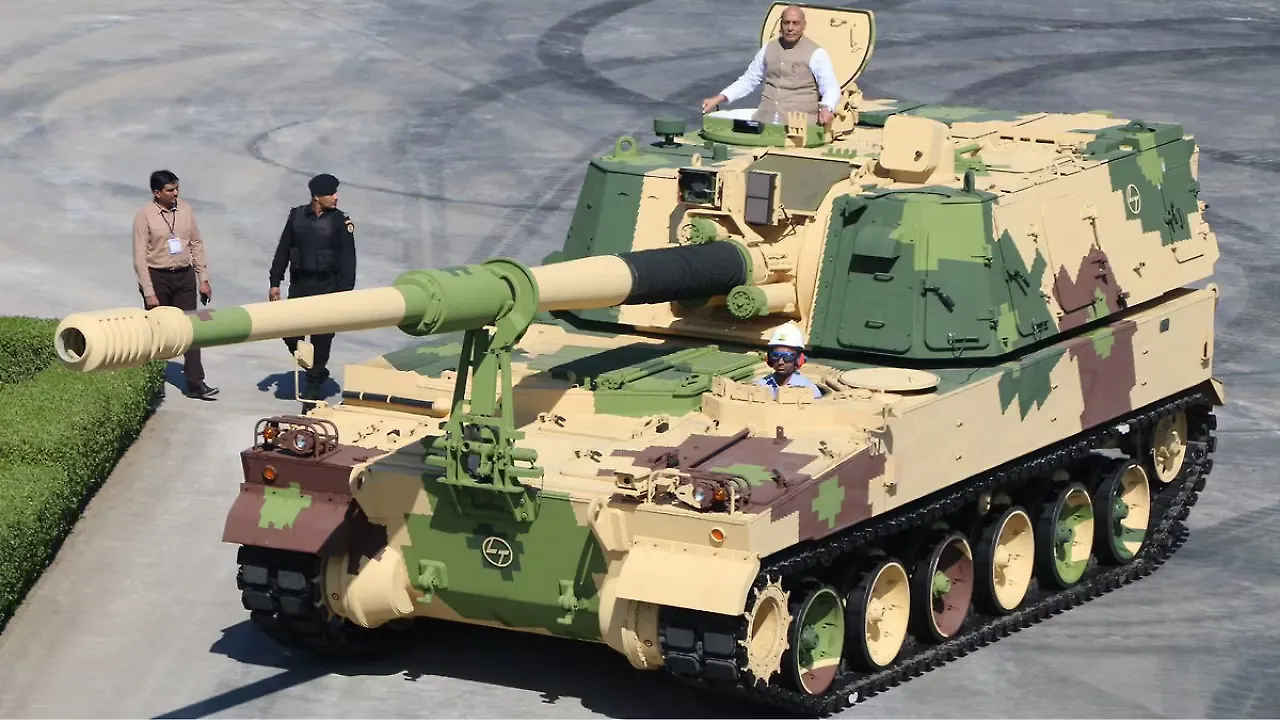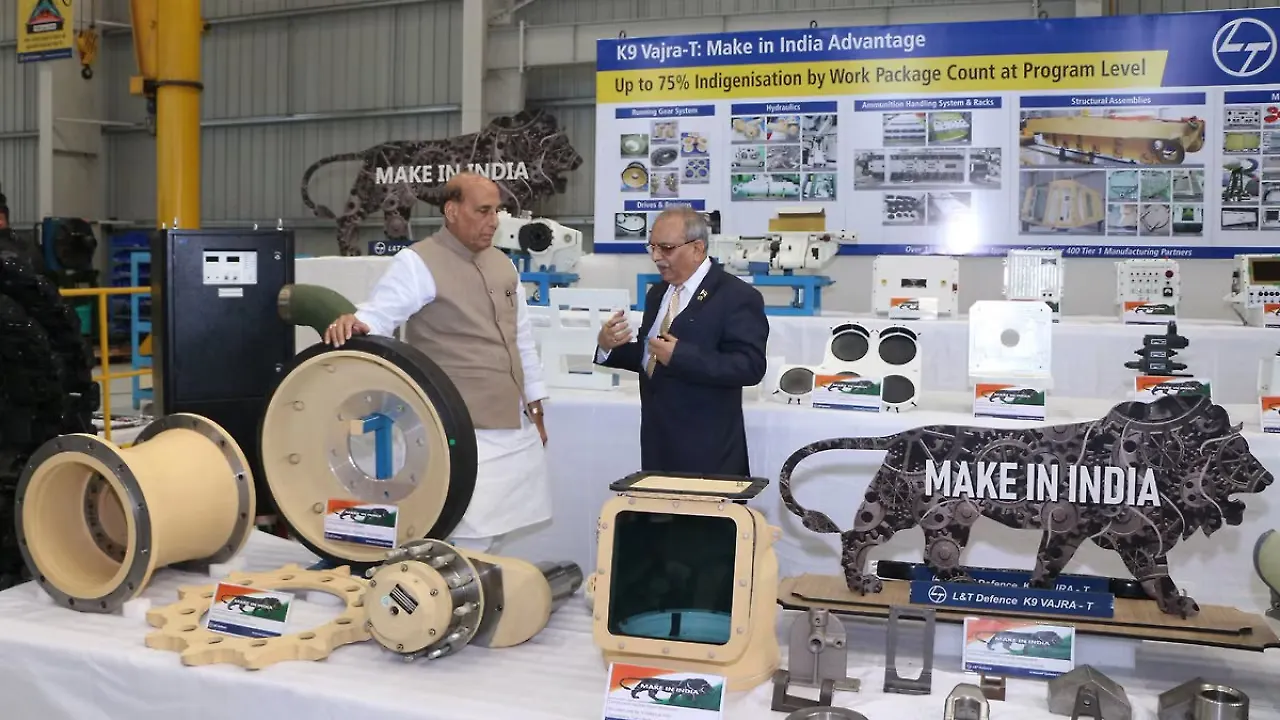
In what is a very welcome and forward-thinking decision that is in furtherance of the Government of India's (GoI) 'Aatmanirbharta' initiative for self-sufficiency in defence - four important defence projects have been offered to the Indian industry for design & development under the Make-I category of Defence Acquisition Procedure (DAP) 2020.
As per a Ministry of Defence (MoD) release last week, the Collegiate Committee of MoD accorded 'Approval In-Principle (AIP)' for the development of an indigenous light tank for the Indian Army, in addition to the development of communication equipment with Indian security protocols, airborne Electro Optical (EO) pod and an airborne standoff jammer for the Indian Air Force. 'The industry will be provided financial support for prototype development of these projects,' the MoD stated.
In addition to the Make-I projects, the MoD has also decided to proceed with five new projects under the industry-funded Make-II procedure. This will include the development of an autonomous combat vehicle and an integrated surveillance and targeting system for the army and developing Full Motion Simulators for the IAF's Boeing AH-64 attack helicopters and CH-47 Chinook utility helicopters. In a forward-thinking move, the development of wearable robotic equipment for aircraft maintenance for the IAF has also been sanctioned. For projects under the 'Make-II' category, no Government funding will be provided for prototype development.
Light Tank
MoD approval for the development of an indigenous light tank is likely to override an April 2021 Request for Information (RFI) issued to import approximately 350 light tanks in a phased manner. 'In the foreseeable operational scenario, the need for an agile and mobile light platform, with adequate firepower, protection,' the MoD stated in its RFI. These light tanks are slated to be deployed in the desert areas near the Pakistan border and mountainous and hilly areas on India's eastern border with China, where conventional Main Battle Tanks (MBT) cannot move freely due to terrain or have performance limitations at the high altitude.

The MoD has asked for a light tank with a combat weight not exceeding 25 tonne and a power to weight ratio of not less than 25 horsepower/tonne. In comparison, the army's T-90S MBTs and T-72M1 MBTs weigh nearly 47 and 46 tonne, respectively, with a power to weight ratio of 21.5 horsepower/tonne for both.
Indigenous Effort
An indigenous solution to the army's light tank requirement has been proposed by the Defence Research & Development Organisation (DRDO), which has partnered with L&T to offer a hybrid solution based on South Korean firm Hanwha Defence's K9 Vajra-T 155mm tracked Self Propelled Howitzer (SPH). According to a blog post by defence journalist Ajay Shukla, the light tank will have a smaller turret with a direct firing, high pressure 105 mm gun, supplied by Belgian firm John Cockerill, instead of the K-9 Vajra artillery turret that mounts a heavier 155 mm gun. In his blog post, Shukla says DRDO is working with L&T to reduce the weight of the 28-tonne Vajra chassis by 3-4 tonne to bring the light tank down to approximately 30 tonne.
L&T, Hanwha Defence's India partner, has already completed deliveries of all 100 K9s ordered in May 2017. The contract for 100 K9s awarded to an Indian private sector firm through global competitive bidding by the MoD is the largest deal. L&T built a green-field manufacturing cum integration and testing facility now called the Armoured System Complex (ASC), located at Hazira, in Gujarat, to manufacture the K9s for the Indian Army.
K9 Vajra-T systems delivered by L&T feature more than 80% indigenous work packages and greater than 50% indigenisation (by value) at the programme level. L&T's supply chain for the K9 Vajra-T involves over 1,000 MSME partners, and about 13,000 components needed per system were supplied by Indian vendors spread across Gujarat, Maharashtra, Karnataka, and Tamil Nadu.

India specific modifications for desert conditions such as Auxiliary Power Pack (APU), Air-conditioning Systems, Fire Fighting Systems, and Nuclear Biological Chemical (NBC) Protection Systems are being made in India.
The first 10 K9 SPHs were delivered from South Korea in Semi Knocked Down (SKD) state by Hanwha Defence, and these were then assembled in India by L&T. The remaining 90 guns featured 14 critical systems which were indigenously developed, including the Fire Control System, Direct Fire System, and the Ammunition Handling System.
Hanwha Defence and L&T have also been contracted to provide a Maintenance Transfer of Technology (MToT) to army base workshops to support these howitzers during their operational life of 3-4 decades.
Other Contenders
One of the early frontrunners for the army light tank requirement was the Russian Sprut-SDM1 light tank which weighs approximately 21 tonne. Russia launched it in 2018 and, with its design and development now completed, is slated to begin series production this year. Russia's defence export agency, Rosoboronexport, touts the Sprut-SDM1 as the only light amphibious fighting vehicle in its class that possesses the firepower of an MBT. It has been optimised for performance over difficult terrains, such as water obstacles, marshes, and mountains. The amphibious light tank is fitted with a powerful 125mm 2A75 cannon, a 7.62mm Remote Controlled Weapon Station (RCWS), and a 7.62mm coaxial machine gun. It has a range of 500km, and its 450 bhp engine powers it to a top speed of 70 kmph on paved surfaces. Hanwha Defence's K21-105 light tank was also offered to meet the army light tank requirement. The K21-105 offered strong firepower with its 105 mm main gun mounted on a proven K21 Infantry Fighting Vehicle (IFV) chassis, offering proven manoeuvrability. It has a combat weight of 21 tonne, a cruising range of 450 km and a top speed of 70 kmph.